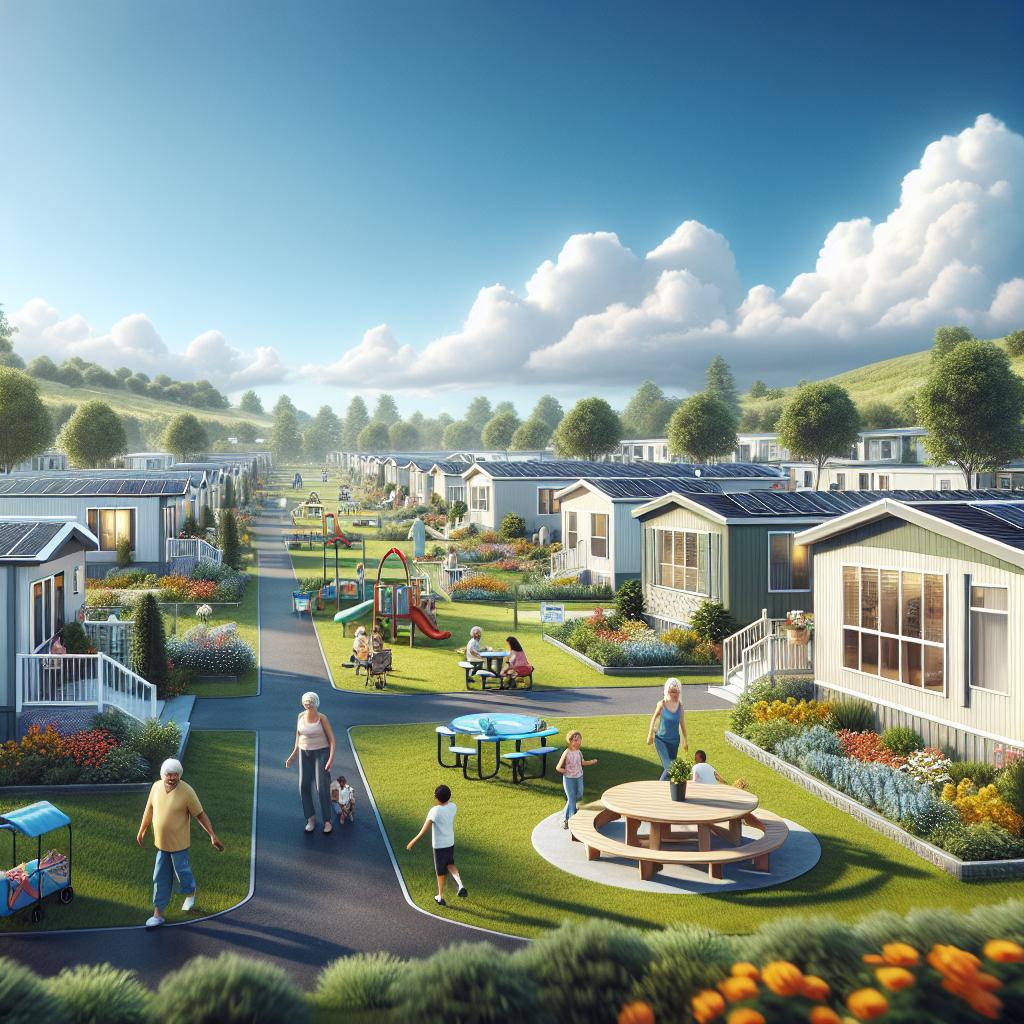Highlights
- Mobile homes offer a flexible and affordable housing solution, transforming the landscape of homeownership in America.
- The HUD Code ensures safety and energy efficiency, elevating manufactured homes above traditional mobile homes.
- Ongoing industry advancements promise improved sustainability and customization, making manufactured homes a respected living option.

Summary and Definition
Manufactured homes, also known as mobile homes in the U.S., are factory-built dwellings on permanent steel chassis designed for transport and regulated by the HUD Code since 1976. This code ensures uniform safety, quality, and energy efficiency standards, distinguishing modern manufactured homes from older mobile homes. They offer affordable, flexible housing in various configurations such as single-wide, double-wide, and multi-section units, often found in community-oriented parks. Despite benefits like cost-effectiveness and energy efficiency, challenges include social stigma, zoning restrictions, financing complexities, and tenant vulnerabilities. Ongoing industry advances and supportive policies aim to enhance affordability, sustainability, and community ownership.
History and Types
Mobile homes originated as temporary, transportable housing and gained prominence mid-20th century. The 1976 HUD Code introduced federal standards that improved safety, durability, and energy efficiency, marking a clear distinction between mobile homes (pre-1976) and manufactured homes (post-1976). In 2023, about 93,000 manufactured homes were produced in the U.S., with active markets in states like Florida and Texas.
Types include single-wide (smallest, up to 18 feet wide), double-wide (two sections joined onsite, larger and more like traditional houses), triple-wide or multi-section homes (largest, resembling conventional homes), and modular homes (factory-built but assembled onsite on permanent foundations, adhering to local building codes).
Construction, Design, and Innovations
Manufactured homes use various foundation types and are built indoors under controlled conditions to ensure quality, durability, and compliance with HUD standards. Modern designs incorporate sustainable materials like recycled steel and eco-friendly insulation, improving energy efficiency and reducing waste. Interior finishes range from traditional wood panels to water-resistant composites, and subfloor materials prioritize moisture resistance for structural integrity.
Homes are built with 20–30% more materials than site-built counterparts to withstand transport and extreme weather. Technological advances include smart home features and customization, supported by government incentives aimed at reducing utility costs and carbon emissions. Despite improvements, quality control and regulatory oversight remain areas of concern.
Advantages and Challenges
Manufactured homes offer affordability, energy efficiency, and flexibility, making homeownership accessible to many. They foster strong community ties, especially in age-restricted parks, providing social engagement and safety. However, challenges include persistent stigma, regulatory and zoning restrictions that limit placement, financing difficulties due to classification as personal property, and maintenance concerns. Older homes face more financing hurdles and depreciation issues.
Mobile Home Communities and Living
Mobile home communities provide affordable, low-maintenance living with social activities and amenities like lawn care. Age-restricted parks add safety benefits. Resident ownership initiatives aim to preserve long-term affordability and stability. Federal regulations ensure safety standards comparable to traditional homes, and modern construction enhances durability against weather extremes. Energy standards continue to improve cost-effectiveness and sustainability within these communities.
Buying, Selling, and Financing
Manufactured homes are more affordable than traditional houses, with median prices around $148,100 in early 2024 versus $484,800 for site-built homes. Financing differs since many homes are classified as personal property, requiring chattel loans with higher interest rates unless placed on permanent foundations qualifying for conventional mortgages. Government-backed loans (FHA, VA, USDA) and local assistance programs support buyers, particularly in rural areas. Sellers must consider market perceptions and quality control to maintain home value.
Regulations, Policies, and Social Factors
The 1976 HUD Code established national standards for manufactured homes, improving safety and quality. Local zoning laws regulate home placement, affecting community integration. Government programs support infrastructure, resident ownership, and energy efficiency, while some municipalities impose restrictive zoning that may violate fair housing laws.
Social factors include affordability as the largest source of unsubsidized housing for 20 million Americans and strong community bonds in parks, particularly for older adults. Resident-owned park models enhance stability. However, manufactured home communities often face environmental risks due to location and social stigma rooted in historical stereotypes. Advocacy groups work to improve residents’ rights and challenge exclusionary policies.
Comparison and Future Outlook
Compared to modular and site-built homes, manufactured homes are more affordable, built to federal HUD standards, and designed for transportability. Modern manufactured homes use more materials for durability and weather resistance, often resembling traditional homes in appearance. They are primarily sited in mobile home parks due to zoning.
The future emphasizes sustainability with recycled materials and eco-friendly construction, supported by updated energy standards aiming to reduce utility costs and emissions. Manufactured homes are increasingly recognized as vital solutions to the affordable housing crisis, with ongoing efforts to improve quality, policy frameworks, and public perception.
The content is provided by Blake Sterling, Fact-Nest












